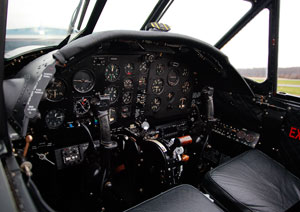 The BAC Jet Provost (originally built by Hunting Percival) was a jet-powered trainer aircraft used by the Royal Air Force from 1955 to 1993. The Jet Provost was also successfully exported, serving in many air forces world-wide. A total of 741 aircraft were built.
The BAC Jet Provost (originally built by Hunting Percival) was a jet-powered trainer aircraft used by the Royal Air Force from 1955 to 1993. The Jet Provost was also successfully exported, serving in many air forces world-wide. A total of 741 aircraft were built.
The Jet Provost proved to be a capable trainer. After successful acceptance trials of the T1 during late 1955 at No. 2 Flying Training School at RAF Hullavington, the RAF formally accepted the type in 1957. The first production version was the T3, powered by the Viper 102, and this entered service with No. 2 Flying Training School, now relocated to RAF Syerston, during June 1959, when deliveries commenced from the Hunting Aircraft factory at Luton airport.
The later T4 was fitted with the more powerful Viper A.S.V. 11 of 2,500 lbs static thrust and first flew on 15 July 1960. It quickly entered service with several Flying Traininjet provost 2g Schools including No 1, No. 2, No 3 and No 6.
The T5 variant was further developed and fitted with the Viper 201 and cockpit pressurisation. These developments encouraged the RAF to utilise the Jet Provost in a number of different roles besides basic training. With a top speed of 440 mph, excellent manoeuvrability, mechanical reliability and low operating costs, the Jet Provost was utilized as an aerobatic aircraft, air warfare and tactical weapons training as well as advanced training. The first T5 made its maiden flight on 28 February 1967 and deliveries from BAC's Warton factory commenced on 3 September 1969. Operators of the T 5 included the RAFs Central Flying School and No. 1, No. 3 and No. 6 Flying Training Schools
as well as advanced training. The first T5 made its maiden flight on 28 February 1967 and deliveries from BAC's Warton factory commenced on 3 September 1969. Operators of the T 5 included the RAFs Central Flying School and No. 1, No. 3 and No. 6 Flying Training Schools
Besides service with the RAF, the Jet Provost found success in export markets. In total 741 Jet Provosts were built and many sold to overseas air forces (Iraq, Sudan, Ceylon, Kuwait, Portugal, Singapore, South Yemen, and Venezuela). They were withdrawn from RAF service in the early 1990s and replaced by Short Tucanos. The Jet Provost remains popular among enthusiasts and being an inexpensive jet, many are now in private hands. Some are flown at airshows.

